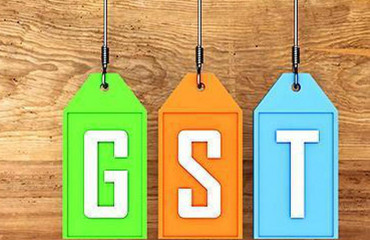
Gross domestic product (GDP) estimates for the first quarter (April to June) that the National Statistical Office (NSO) released last week have puzzled many commentators. The estimate for year-on-year (yoy) growth in Q1 was 7.8%, lower than Reserve Bank of India’s (RBI) projection of 8%. Several economists were also expecting higher growth. Meanwhile, a few economists pointed out that statistical peculiarities may have inflated NSO’s growth estimates.
Gross domestic product (GDP) estimates for the first quarter (April to June) that the National Statistical Office (NSO) released last week have puzzled many commentators. The estimate for year-on-year (yoy) growth in Q1 was 7.8%, lower than Reserve Bank of India's (RBI) projection of 8%. Several economists were also expecting higher growth. Meanwhile, a few economists pointed out that statistical peculiarities may have inflated NSO's growth estimates.
Quarterly estimates are given low weightage in serious analyses. SnapView has explained previously that these estimates are preliminary, and prepared using sparse, rudimentary data. As the year progresses and better-quality information becomes available, the NSO revises them on a schedule.
But at times, even quarterly estimates contain important messages for policymakers. The Q1 estimates have quite a few. The economy remains in recovery mode, with Q1 GDP 13.8% higher than the pre-pandemic level. However, the momentum may not sustain as the year progresses.
The government's capex push over the past two years is yet to show up meaningfully in investments or consumption growth, as can be seen from the structure of demand reflecting in the estimates: The shares of consumption and government spending in GDP fell, while that of capital formation didn't budge.
Private consumption expenditure grew 6%, slower than overall GDP growth. Capital formation increased about 8%, faster than the rate at which GDP grew, but slower than its average growth rate during the preceding four quarters.
High inflation – due to, among other reasons, the RBI's failure to act in time and successive food-supply shocks this year – appears to have been a drag on consumption demand in Q1. If monsoon rains remain deficient, there will be new risks for inflation and growth.
By shrinking consumers' purchasing power, high inflation appears to have frustrated the government's strategy of providing support to the economy through capex. With inflation projected to remain high, including by RBI, whether consumption will pick up in the coming months is difficult to say. It's possible that the successive food-price shocks that followed high inflation over the past couple of years will make households and businesses even more wary of spending, so consumption may not pick up, dampening the private sector's enthusiasm for new investments.
Rains in September will affect growth prospects going forward. The agriculture sector grew 3.5% yoy in Q1. Sustaining this rate of growth may be difficult if worries of deficient rainfall materialise, as food production and affordability could be affected, resulting in lower incomes and spending in rural areas. Besides dampening growth, lower food production could also keep inflation elevated if businesses' and households' inflation expectations spill over into non-food transactions. This would leave the RBI with no option but to cool prices by sacrificing growth.
Manufacturing sector growth was a disappointing 4.7% in Q1. The drag appears to be due to global central banks cooling demand on exports, which contracted 7.7% after nine consecutive quarters of growth. If interest rates in advanced economies remain high for longer, as the US Federal Reserve has been indicating, they could hamper India's GDP growth in the coming months.
Services led overall GDP growth during the Q1, while financial, real estate and professional services grew robustly at 12.2%. Trade, hotels, transport, communication and storage GDP grew 9.2% but in absolute terms remained 2% lower than in Q1 of 2019-20. These employment-intensive services, it seems, have recovered fully from the covid shock, which suggests that policy support and relief were insufficient. The low manufacturing-sector growth despite high corporate profit growth also indicates that the unorganised sector's performance is likely to have been weak.
Another important message from the GDP estimates is that tax-collection growth could remain tepid through the year, constraining the exchequer's ability to provide the economy the support it needs. This signals a difficult year ahead for Finance Minister Nirmala Sitharaman as she prepares the interim budget before Lok Sabha elections in April 2024.
The low nominal GDP growth estimate (8%) indicates tax-revenue growth will be low this year. The impact of the GDP deflator has once again come into play after 15 quarters. Since its estimates are contaminated by rising prices, the NSO deflates them. Its GDP deflator in Q1 was 0.2% yoy, mainly because the wholesale price index-based inflation rate eased. The estimates for nominal growth (8%) and real growth (7.8%) are, therefore, close.
Tax-collections data from the Controller General of Accounts for the first four months of FY24 confirms worries of weak growth. The union government's gross tax revenues grew just 2.8%, limiting the government's ability to spend over and above the budgeted capex allocations to boost demand. Corporate tax collections contracted 15%. The impact is visible in the Q1 GDP estimates: the government's final consumption expenditure contracted by just under 1%.
Weak corporate tax collections despite strong profit margins reported by companies suggest volume growth is sluggish. GST revenues doing well at the same time suggests that the recovery is K-shaped. GST collections could be getting a boost from higher demand for luxury goods, which attract higher tax rates.
Thus, besides GDP growth estimates for manufacturing and select services, the tax data may also be indicating that an appropriate policy response is required to address the K-shaped recovery and arrest the expected slowdown in growth.
However, the government has already exhausted most of its spending power on a capex push that is yet to meaningfully spur consumption or investments. That's the challenge Sitharaman will face when preparing the next interim budget.
